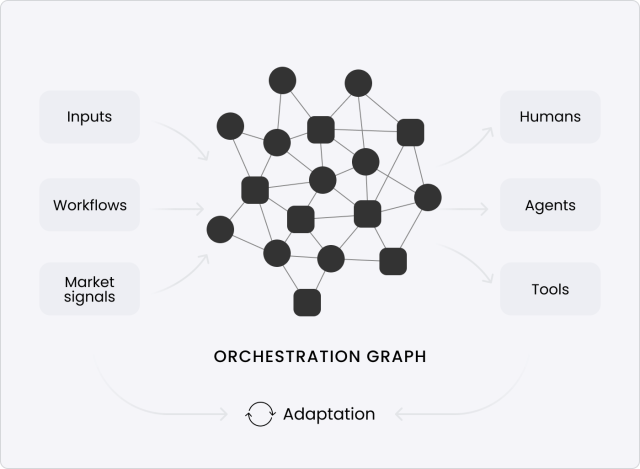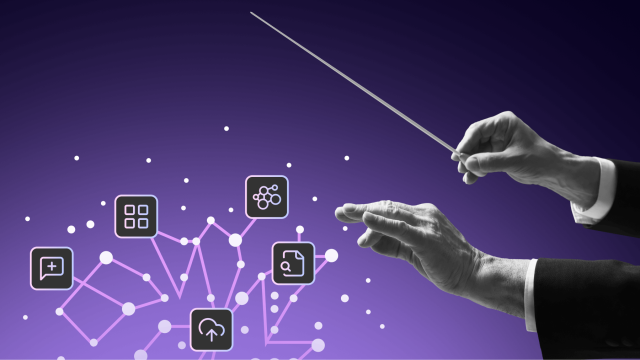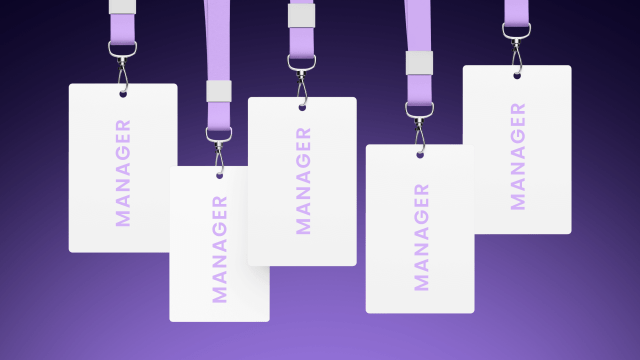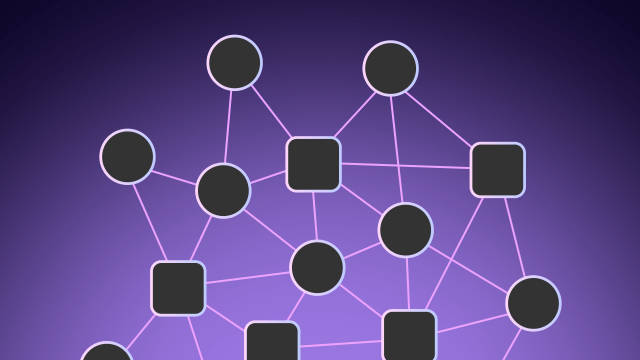Thought leadership
– 6 min read
The living brain of the enterprise
How the orchestration graph becomes the firm’s AI operating system

Every enterprise runs on an invisible network of handoffs, approvals, and escalations. This network is the foundation for your business, but it has limitations. It is both the engine and the bottleneck.
- It allows thousands of people, tools, and systems to coordinate in unison,
- But it’s also why opportunities die in meetings, decisions stall in inboxes, and execution often lags behind the market.
This is the orchestration graph, the hidden system that turns intent into impact. AI won’t replace it. AI will bring it to life, making it dynamic, streamlined, and self‑improving.
From hidden map to living brain
AI transforms the orchestration graph from a static map into a thinking system:
- It can observe itself, sensing bottlenecks and inefficiencies.
- It can act directly, routing work across humans, agents, and tools.
- It can adapt continuously, improving pathways as conditions change.
What once required hierarchies, memos, and meetings becomes a self‑improving network; an enterprise organism that thinks and learns.
The graph and the stack: Brain + body
If the orchestration graph is the brain, the enterprise stack is the body:
- The stack is made up of humans, tools, agents, and data – the operational muscle.
- The graph is the nervous system and brain, deciding where and how that muscle moves.
This pairing matters because body without brain is just motion, busy but blind. Brain without body is just theory, intelligence with no leverage.
When the graph animates the stack:
- Every node: person, model, or system – becomes part of a coordinated whole.
- Work flows to the right resource at the right moment, like neurons firing.
- The firm shifts from a static hierarchy to a thinking, adaptive organism.
It’s the difference between a company that executes tasks and one that continuously orchestrates outcomes.

How the orchestration graph functions as the firm’s AI operating system
A traditional OS coordinates resources to reliably execute processes and manage system stability. The orchestration graph performs a similar role at enterprise scale:
- Monitors and adapts workflows for performance and reliability (like resource and feedback management)
- Captures business signals and intent (like system inputs)
- Schedules and routes work across humans, agents, and tools (like process scheduling)
Capturing Intent and Inputs
Every process begins with intent: a customer problem, a risk to mitigate, an opportunity to seize.
The graph is the central nervous system for intent, ingesting signals from:
- Humans: Goals set in dashboards, chat prompts, or meetings
- Systems: CRM updates, support tickets, operational alerts
- Markets: Pricing shifts, competitor moves, external data feeds
In the old world, these signals were siloed. In the graph, they become inputs one can orchestrate, ready for action.
How work flows
Once intent enters the graph, it decides what happens next:
- AI Agents execute autonomous tasks: analysis, content creation, workflow triggers
- Humans step in where judgment or creativity is needed
- Tools & Systems are invoked like callable functions in the graph
The orchestration graph determines:
- Which node executes (agent, human, or system)
- When and in what order tasks should flow
- How exceptions are handled, using blueprints for predictable work and dynamic routing for novel cases
Agents execute within these guardrails, while humans supervise by exception. How the Graph Learns and Improves
A true OS doesn’t just execute; it optimizes over time with patches and updates. Right now those are pushed by human developers. With self‑evolving models, the orchestration graph continuously improves:
- Path Optimization: Shrinking loops, removing redundancy, accelerating throughput
- Graph Reshaping: Updating delegation logic as teams, tools, and markets change
- Opening New Pathways: Surfacing workflows humans wouldn’t design themselves
Each execution cycle becomes a feedback loop, compounding enterprise intelligence and adaptability.
A day in the life: the OS in action
Let’s imagine a day in the life of a a day in the life of a product manager/product team interacting with the orchestration graph.
- A market signal hits the graph seeing customer churn spikes in one region.
- An initiator agent claims the signal and plans the response, a role once exclusive to humans:
- It drafts a work plan and proposes next steps, a role traditionally handled by a human product manager.
- The graph defines the scope of what can and should happen:
- Which agents can act, which tools are allowed, and where human review is required.
- A PM receives a concise, pre‑planned brief with recommended experiments for approval or adjustment.
- Agents execute the scoped work, while self‑evolving models observe outcomes, shorten future loops, and refine orchestration logic.
What once required weeks of meetings and manual handoffs now happens in a single orchestrated flow, silently directed by the graph.
Blueprints and guardrails: building trust
No operating system scales without trust. Admins and users set the following:
- Blueprints codify SOPs like: finance approvals, compliance flows, incident responses
- Guardrails enforce those SOPs, ensuring reliability where it’s required while leaving high‑autonomy zones for exploration
This lets humans supervise by exception, turning the graph’s flexibility into dependable scale. Without guardrails, autonomy is chaos. Without freedom, the graph can’t capture AI’s upside.
The employee interaction layer
Once the orchestration graph encodes how work moves through the firm, the way employees interact with work changes entirely. In the old world:
- Employees hunted for tasks across apps, emails, and meetings.
- Coordination lived in Slack threads and status calls.
In the new world:
- The graph becomes the interface.
- Work finds employees instead of the other way around.
- Humans only engage when judgment, creativity, or context is required.
For today’s workforce, the interaction layer appears as embedded experiences:
- A Slack prompt to review a code change
- A dashboard notification to approve an AI‑generated campaign
- A leadership console to monitor orchestration and intervene by exception
As AI‑native employees rise, the interface will evolve into ambient orchestration:
- A majority of work is handled invisibly by agents within the graph
- Employees interact with briefs, recommendations, and decision points
- Work in continuous flow state
This layer matters because it’s where orchestration meets the human experience – making the living brain of the enterprise visible, trustworthy, and actionable.
The future of the firm
The orchestration graph turns the enterprise into a living brain continuously orchestrating work, learning from outcomes, and improving itself with every cycle.
Firms that embrace this shift won’t just work faster; they will work smarter, compounding intelligence and adaptability in ways traditional hierarchies can’t match.
The future enterprise won’t just execute. It will think. Learn. Evolve.



